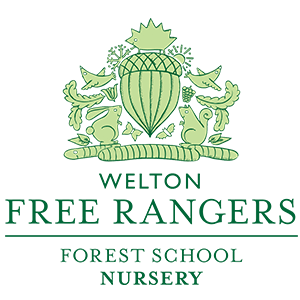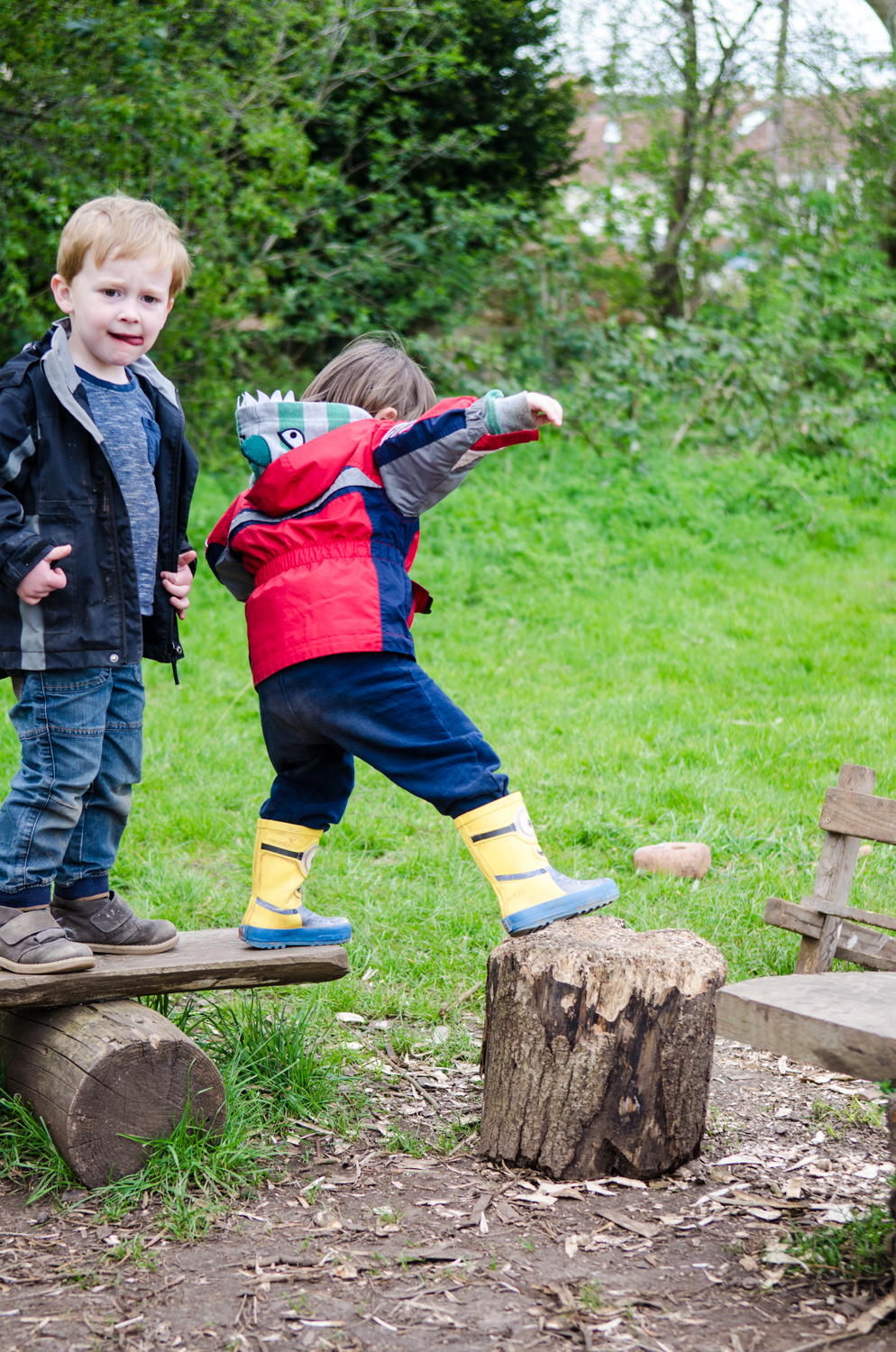If I asked any of our Forest Schoolers which space they like to play in the most, I would know. It's simple really. It's the space offering the most diverse options for play. Our Tree House gets an absolute hammering from the children, but then again so does the rest of the site...
Our Forest School paddock proffers lots of different areas to play: The Cabin, the Tree House, the jumbo climbing logs, the criss-crossing pathways, the "Timber Trail" and Mud Hill, or even the pond, there is scope for many different levels of play, as well as catering for many varied play styles and schemas. The one element the paddock lacks is a space to climb in and hide from the world. Don't get me wrong, in the height of summer when the Cow Parsley has fully grown, there are plenty of places to hide off the beaten track, but what about now? A recent focus for me over the past few weeks was to offer our Forest Schoolers in the Den a place to take their play 'inside' whilst being outside. Out came tarps, rope, willow lengths, a few other loose resources and a massive ex-army parachute to provide a more personal, private, child-sized space for them to base their free-play. It was certainly popular:
Those smiles don't lie. It was so much fun in fact, we initiated it all over the paddock. Children chased in and around them, conjuring up games and playing out scenarios with the resources provided. Of special note was the use of ropes, which played a key role across all of the groups. They had private conversations, barely audible by the adults hovering nearby as this was child owned play. Plus, we couldn't fit in! They even took our adult built dens down in places and reconfigured them to fit their own needs. The play was true and honest and completely child-centred. By the third week or so, they had began to avoid these den-space options, opting to play outside instead. Our observations also highlighted that Spring's warm(ish) weather has brought forth the creepy crawlies that have, up until now sought shelter in the shade; this hadn't escaped the children's attention:
To forge the two elements together (Bugs and Shelters) we decided to go back to basics with our climbing skills as we've had many new faces join us from the Burrow and further afield. We began last week's sessions by trying to think of as many types of bugs as possible and how they moved, linking these actions with the children's bodies. We put these actions in practice across a mini assault course I built. Buzzy bees, slippery slugs and snails, scuttling beetles, dainty ants, wriggling worms and spiders that thoughtfully crossed their silken webs. Can you guess which is which below?
The aim of the session, (for the children it was to generally charge around, in, under and over every obstacle in sight), was to get the children to self-assess risks as they played and ventured. The goal? Safer, broader, co-operative and more complex play. To delve deeper into the learning and development: we'll see burgeoning gross motor skills and planning, balance, and bodily co-ordination but also language skills as they attempt to pass each other on a log, empathy when our friend falls so we can help them up, and a greater understanding of their own capable physicality and strengths. I want these children to be able to play intelligently, with and through their friends, with safety and courage. Holistic outdoor education.
As they ran around being bees or butterflies, they checked where they ran, paying attention to who was running with them and whether the ground was wet or dry. As they climbed over logs and stumps, under tarps and the tree house as beetles or ants, they assessed the ground for dangerous objects, they gauged whether the logs were slippery, they used their hands to steady themselves. As they slid down the slide like snails, they waited for it to be clear before coming down (sometimes head/feet first. Because why not?!) and when jumping from the logs like grasshoppers they remembered to bend their knees on landing. Once they had finished their enjoyment of the assault course the children were free to access the rest of the site to utilise these skills, closely watched by the adults with only the occasional reminder.
By far the most popular part was the Spiders Web I built under the Tree House using what felt like several miles of rope. This really challenged but also excited the children as although we've had upright rope spiders webs for them to use before, they hadn't used one that lay flat. You could really see the thought processes as they navigated across, some stepping through the gaps, others channeling their inner spider to tiptoe across. We even found very similar spiders webs underneath the Tree House to compare ours to. We love our Tree House.
As the week progressed children used their new skills to access areas to find bugs too, and the conversations and questions flowed freely: Why has that worm got legs? Why hasn't that snail got a shell? and my personal favourite: Why do woodlice have moustaches? We also left out a few reference books so that the children could use them to link the real and tangible to the funny looking pictures in books almost demystifying them. And because kids love books! Furthermore, to add a little more interest for the children during the latter part of the week, we also added a slack-line and pretended it was a long line of silk for our little spiders to side-step across as well as a netted hammock which we turned into a cocoon for the metamorphosis of caterpillars into butterflies! Such good fun:
This most excellent week of Forest School was a good way to close the door on the shelter theme, and continue onto searching for some bugs which no doubt you have already heard about when picking up your Free Rangers from the Den. I have thoroughly enjoyed putting the children through their paces and vice versa! Lots more photos in next week's blog so you can find out about all the wriggly, squirmy, squishy things we found lurking in the undergrowth. Stay tuned.
Thanks for reading and do leave a comment!
















































